Welcome
Ham Wall is a wetland teeming with wildlife - from rare species like water voles and otters to magnificent birds like bitterns and kingfishers. Witness stunning views across the marshes to Glastonbury Tor and enjoy getting back to nature in this magical place.
The reserve has more than 3 miles (5 km) of trails. The main track is a wide and raised hard standing surface with vehicular access to two designated blue badge holder parking bays, providing easy access to Viewing Platform 1, three viewing screens and the Tor View Hide via wheelchair-accessible boardwalks.
The main track has multi user access and is used by pedestrians, cyclists and also has limited motor vehicle use.
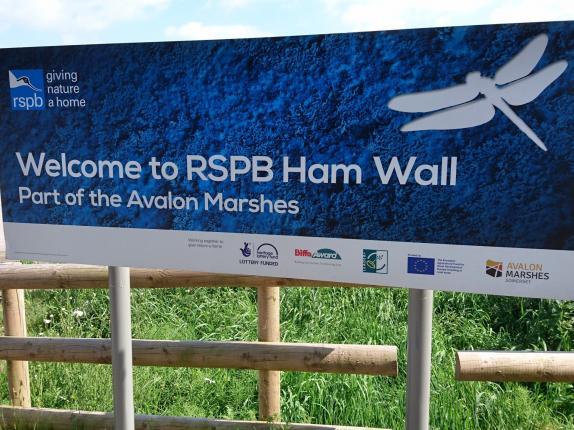
Level access
There is level access from the main entrance to:
Toilets at Ham WallThe Mini MarshesHam Wall LoopWalton Heath TrailGeneral
Getting here
Travel by public transport
Parking
On arrival, there is a 120-space car park with five Blue Badge spaces in the main car park.
The Info Point is open every day (subject to availability) from 10am - 4pm.
The Kiosk, serving hot and cold drinks, prepacked snacks and ice creams, is open at weekends 10am - 4pm and regularly during those hours on weekdays, subject to volunteer availability.
The car park, toilets and reserve trails are open 7 days a week. Car park and toilets are open dawn-dusk; exact timings are seasonal and can be found on the Ham Wall web page.
Four designated and marked Blue Badge spaces are located within 20 metres of the main entrance to the reserve. One more Blue Badge space is located at the other end of the car park, next to the boardwalk heading towards Shapwick Heath NNR.
The car park is on a level hard standing surface with no inclines.
Parking is free for RSPB members and Blue Badge holders. Please display RSPB membership card or Blue Badge on your dashboard. There is a flat-rate parking charge of £3 for non RSPB members. This can be paid by card via the parking machine at the entrance to the reserve, or by cash/card with the welcome staff at the Info Point during open hours.
There are an additional 2 Blue Badge spaces actually on the reserve, located close to Viewing Platform 1, at the entrance of the Waltons Trail. These spaces can be accessed with a RADAR key. If you do not have your own, RADAR keys can be borrowed from the Info Point in the main car park, when open. Vehicular access to these two spaces is along the main reserve track, accessed by turning right out of the car park and taking the next immediate right (between two concrete posts). A RADAR key is required to unlock a chained and padlocked metal five-bar gate. The gate must be closed and securely locked on both entry and exit.
There is an elevated bridge just after the first gate, with a significant slope on both sides.
The entrance to the Blue Badge parking area is signposted on the right-hand side as you reach Viewing Platform 1 and is 750 m from the start of the track. Vehicles are not permitted on the main track beyond this point.
A RADAR key is required to unlock a chained and padlocked wooden five-bar gate at the entrance to the accessible parking area. The gate must be shut and securely locked after both entry and exit.
The designated and signposted parking spaces are on a flat grass surface located at the start of the Waltons Heath Trail.
This parking area allows access to Viewing Platform 1, the Ham Wall Red Loop, Reedbed Trail and Walton Heath Trail.
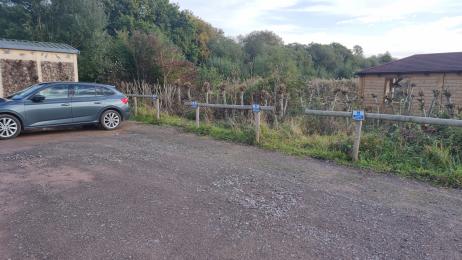
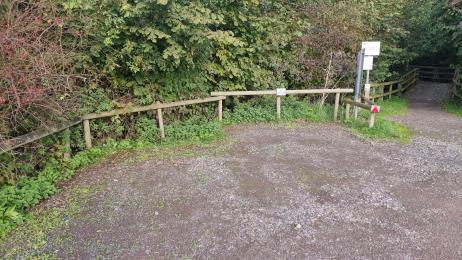
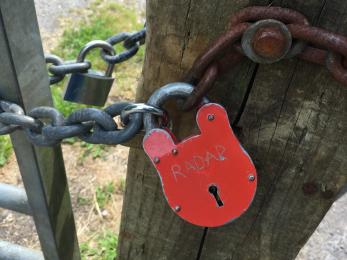
Arrival
Path to main entrance
Main entrance
Access to the Info Point is level with a gravel surface. The Info Point is a wooden hut that has an open hatch and a table display of items relevant to wildlife and the work of the RSPB. A4 paper maps and general information are available from the Info Point. There is no internal access to this building for visitors.
Access to the refreshments kiosk is via wooden decking with a high-visibility yellow border and gently sloping edges. There are low-level wooden planters segregating the area around the refreshments kiosk from vehicles. The wooden hut has a countertop kiosk setup where you can order light refreshments from our volunteers. There is no internal access to this building for visitors. The staff entrance door may be closed, or latched open with a high-visibility fabric barrier covering the threshold. There is a sliding door that may be open fully during nice weather. There is an A-frame on the decking outside displaying the available menu, plus a small table with pin badges to purchase and a refuse caddy.
On the side of the refreshments kiosk is a large map of the reserve, with the option to download a copy to your mobile device. There are a number of A4 posters displaying general information, upcoming events, and health & safety notices.
On either side of the refreshments kiosk, there are viewing windows to look into the wildlife garden obscured behind. There are bird feeders and small birds will be flitting around.
During the refreshment kiosk's open hours, there are bins available for recycling and general waste. There are no dog poo bins on-site at all.
Men's, women's and disabled toilets are available in a separate block next to the refreshment kiosk. More details are available under the 'getting around inside' tab.
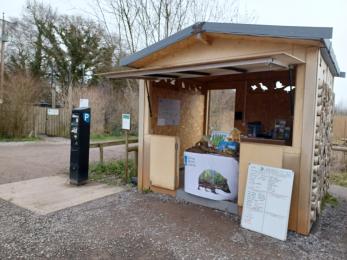
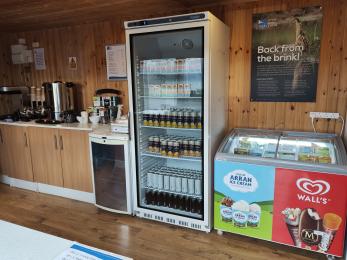
Getting around inside
Public toilet
Toilets at Ham Wall
Public toilets are available in a separate toilet block that is open dawn-dusk with seasonal timings in line with the car park open times (please check Ham Wall web page).
The women's toilet consists of two cubicles with sanitary waste bins, two pedestal sinks with soap dispensers and a hand dryer. This toilet is accessed via three steps and does not have ramp access.
A sloping ramp leading to the men's and disabled toilets is 1170 mm in width.
The men's toilet consists of one cubicle with sanitary waste bin, two urinals, two countertop sinks with soap dispensers and a hand dryer.
The disabled/accessible toilet provides one toilet with sanitary waste bin, one wall sink, baby changing facilities and a hand dryer. The door is locked from the inside via a lift handle mechanism.
A pull-down support rail is available next to the toilet. An emergency cord is also located next to the toilet and when pulled activates an alarm and flashing light which is visible and audible from the reception buildings.
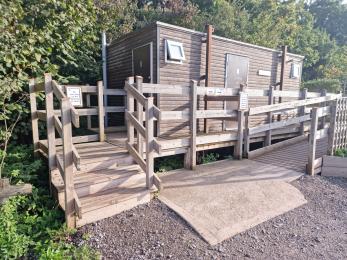
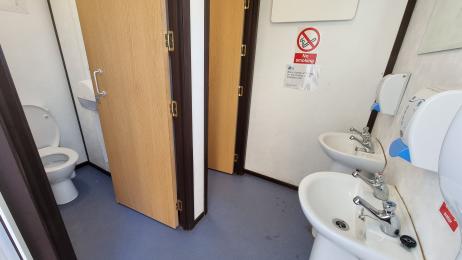
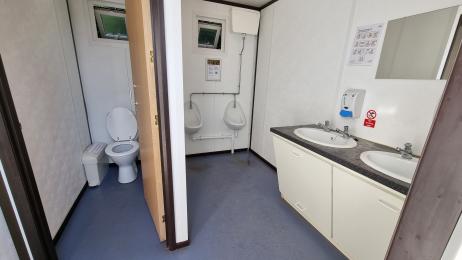
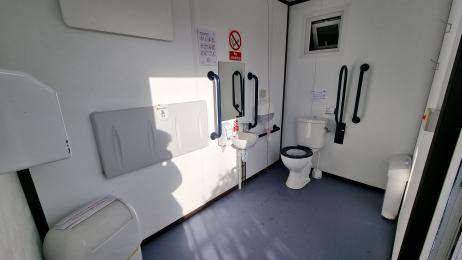
Getting around outside
The Mini Marshes is a mini wetland that has been created adjacent to the main car park. There is a short 220m walking loop around the Mini Marshes with gravel surface throughout. In this area we have picnic benches, two pond-dipping platforms, a play trail for younger visitors, two wooden skywatching seats and a solitary bench.
The picnic area in the Mini Marshes has six picnic benches with seating for up to six people on each bench and one wheelchair space on four of the benches. The seating has no back or sides. All benches are located on a grass surface and are securely fixed to the ground.
The wooden Education Shelter in this area is cordoned off and is not available for visitor use, but is used for scheduled school groups and events. Fixed wooden storage boxes runnning along the back and sides of the building act as seating. These are 480 mm in height.
There are two pond-dipping platforms used for education visits and events, made from wooden and plastic planks with a kickboard on each side. The platforms are accessible from a grass area behind fencing, with an alternative cut-through to the car park beside the covered shelter. There is an open area of grass which we encourage to become a wildflower meadow in the summer, with a bug hotel in one corner for visitors to appreciate. The area behind the fencing may be cordoned off (with yellow chains) during events and school visits.
Shortly after you leave the car park/ welcome area, there is short grass path on your left to a solitary wooden seat in a quiet spot. The seat stands mm high from the ground and has a back and arms.
Part way into the Mini Marshes, two skywatching seats (mm from ground) are angled backwards to allow a comfortable laid back position. Within this grass area is another summer meadow and a wooded copse which can be walked in.
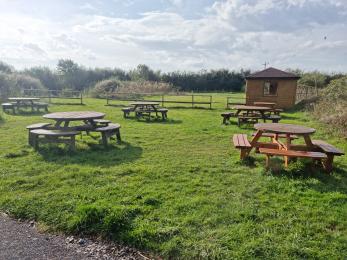
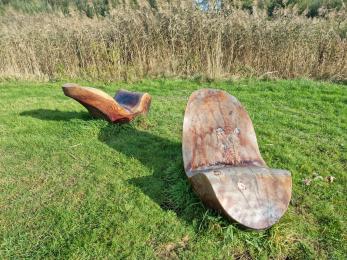
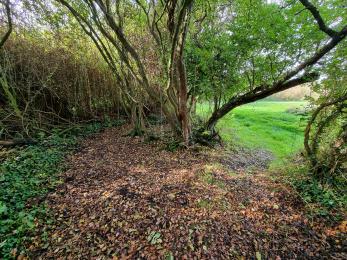
Ham Wall Loop
The Ham Wall Loop is 3230m in length following first the hardstanding old railway path, and then a grass trail after crossing the Glastonbury Canal. The hardstanding section of the Ham Wall Loop has multi-user access and is used by pedestrians, cyclists and also has restricted motor vehicle use. Please note: One of the footbridges completing the Ham Wall Loop has been condemned, so it is currently not possible to complete a full loop on both sides of the canal path.
Dogs are permitted on a lead on the Ham Wall Loop but are not permitted along the path to the Avalon Hide or any other areas of the reserve. Assistance dogs are permitted on all parts of the reserve.
The Ham Wall Loop is accessible from the main car park and Mini Marshes via wooden boardwalks. Each is 1880 mm in width and the surface is covered with wire mesh.
After crossing the boardwalk from the car park and turning right, there is a metal five-bar gate (described in the 'arrival section'). The gate is securely locked by a padlock and can be accessed using a RADAR key, available to borrow from the Info Point when open. Next to the gate is a barrier to prevent motorcycle access but allow wheelchair access. The cycle barrier is 800mm in width at the widest point and 480mm in width at the narrowest point.
Accessing the Ham Wall loop over the other boardwalk from the Mini Marshes avoids the locked gate and cycle barrier and is advised for mobility vehicles.
Carrying on towards the reserve, there is an elevated disused railway bridge with a significant slope on either side. This has a gradient of...
There are cut-ins of mm depth along this first section which provide space to observe wildlife off of the path. A series of wooden benches are located along the hardstanding path, approximately every 100m. The seats are mm from the ground and have a back and arms.
Continuing along the Ham Wall Loop, you come to Viewing Platform 1. It is an open viewing area overlooking a large area of open water surrounded by reedbed, with a sand martin nesting box situated centrally. There are two bicycle racks in the shape of bats adjacent to the platform. The viewing platform itself has a gravel surface and several seats of different types: four open benches with no backs or sides 580mm in height; a covered bench with mm of headspace from the ground and mm in width. A wooden rail of mm height encloses the area. The viewing platform is close to the Blue Badge parking at Walton Heath and is 600m from the main car park.
There is both five-bar gate access and kissing gate access from the Ham Wall Loop to the Walton Heath Trail and the Reedbed Trail. The wooden five-bar gate can be opened using a RADAR key. The kissing gate is 1250 mm in width and is designed to be accessible for wheelchair users.
There are two footbridges crossing over the Glastonbury Canal from one side of the Ham Wall Loop to the other. The first bridge is located after Viewing Platform 1 and the second footbridge is located after Viewing Platform 2. They both cross over from a hard-standing surface to a grass-surface public footpath. Unfortunately, the farther footbridge, owned by the Environment Agency, beyond Viewing Platform 2, has been condemned and is not currently in use. This means it is not possible to complete a full loop on both sides of the canal. Crossing of the canal must be done at the middle bridge, or at Ashcott Corner.
At the first bridge over the canal, there is a sloping gravel path leading down from the main track. The bridge is wooden in stucture with a boardwalk base covered in wire mesh. The base of the bridge is 1800mm in width. There are wooden handrails on either side of the bridge. The exit onto the grass footpath is level.
Viewing Platform 2 is a viewing area accessible on the main track that overlooks a large area of reedbed. There is no edge to the 'platform' and the terrain is level. It has gravel hardstanding and a layout similar to Viewing Platform 1 - bench type seating with no back or sides 580 mm in height, a surrounding rail of mm height, and a covered bench. It is approximately 1250m from the main car park and 650m from the alternative disabled parking within the reserve. There are two bicycle racks shaped like dragonflies of mm height.
From the Ham Wall Loop there are two gates leading onto the Loxton's Marsh trail. These are described in the Loxton's Marsh Trail section.
The section of the Ham Wall Loop on the north side of the canal (after crossing the bridge) is an uneven grass footpath, Vegetation and grass can grow longer at certain times of the year leaving the surface wet. Throughout the winter and at times of heavy rainfall the surface can become very muddy and difficult to pass in places.
Three wooden seats are located along the grass path between the first and second footbridges. The seats have both backs and sides and overlook the reedbeds along the trail. There are also two more skywatching seats of equal dimensions for users to enjoy.
There is one wicker viewing screen located along the grass footpath between the first and second footbridges. It has an uneven soil surface and no seating. It does not have a roof.
The Avalon Hide (see next section) is accessible via a 400m path which leads from the Ham Wall loop, between the first and second footbridges.
The return leg of the Ham Wall Loop along the grass footpath finishes at the road 40m from main Car Park. This part of the Loop is exited via a wooden stile or a wooden five-bar gate. The gate is secured by a padlock and can be accessed via a RADAR key. Cars and other motor vehicles are not permitted on this part of the path.
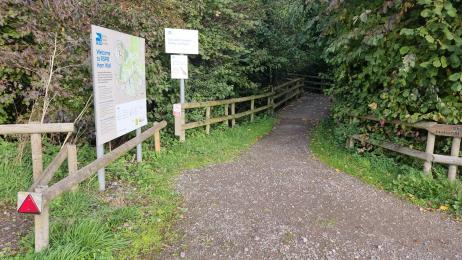
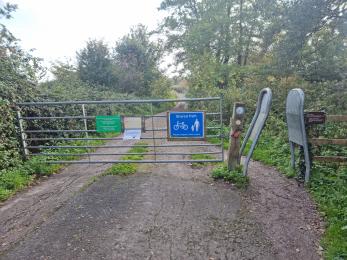
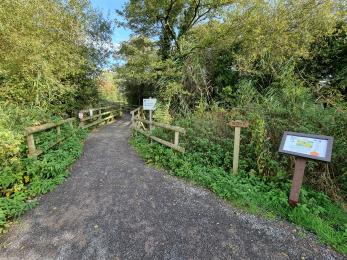
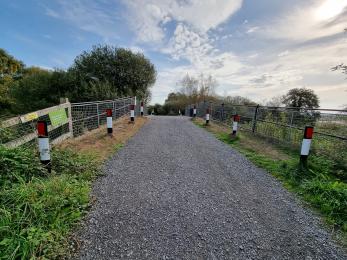
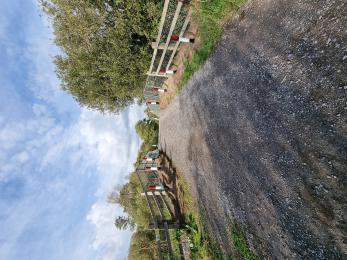
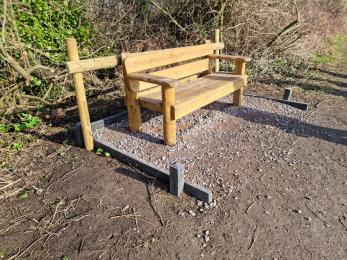
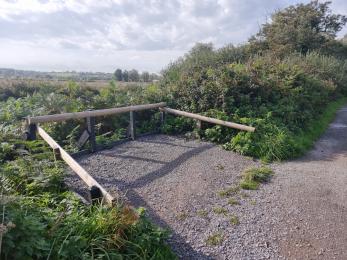
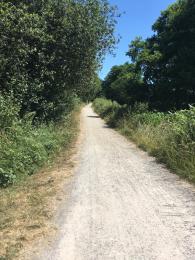
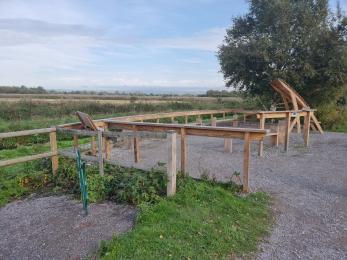
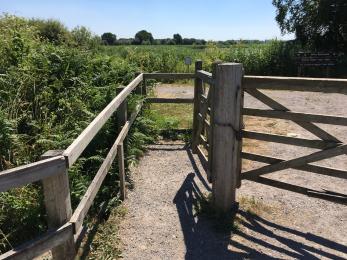
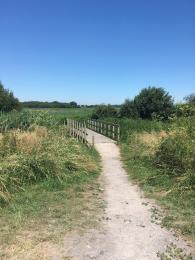
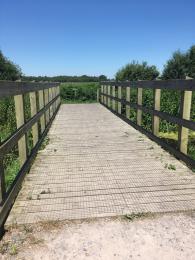
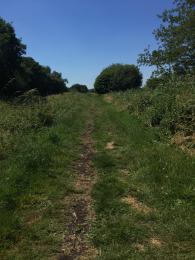
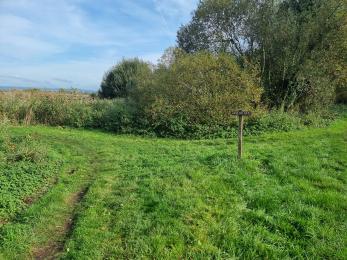
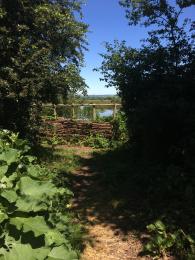
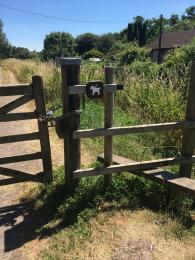
The Avalon Hide
The Avalon Hide is a raised two-storey hide located on a path 400m from the Ham Wall Loop. It overlooks a large area of reedbed and the lower storey offers panoramic views of the reserve. It is 1500m from the main car park and 800m from the on-reserve Blue Badge parking at Walton Heath.
Your route will take you past open water views, amongst the reedbed and alongside a dark woodland. You will hear the sounds of the wind in the reeds, the creak of mature trees or the squelch of mud underfoot. Birds can be very close along this path, so you may hear the high-pitched 'scream' of a water rail, or the sudden, loud song of a Cetti's warbler.
The path is an uneven grass path leading from the grass public footpath of the Ham Wall Loop. Access to the path is via an unsecured kissing gate with an entrance 1250mm in width. A five-bar wooden gate is adjacent to the kissing gate. This gate is securely locked and can not be accessed by visitors. Dogs (excepting assistance dogs) are not permitted to leave the Ham Wall Loop or walk to the Avalon Hide.
The first section is an uneven grass path which leads to a wooden bridge crossing a ditch. Rubber matting is in place on the gentle slope down to the bridge. The bridge surface is wooden and covered with wire mesh. Handrails are present on either side of the bridge and the base is 1800 mm in width. Rubber matting is present along the rest of the trail until the Avalon Hide is reached. In parts, the trail is enclosed by reeds at either side and is 1200 mm at it's narrowest points. There are sloping sides to the edges of the path in parts and there are no kickboards in place.
The whole trail can become very muddy and water-logged during the winter and after periods of heavy rain. It may be subject to closure in extreme circumstances.
The Avalon Hide has two storeys. The lower storey is accessed via a wooden sloping boardwalk which is covered with wire mesh and has rails on either side. It is 1500mm in width and joins to the lower level of wooden decking with a minimum width of 1600 mm encircling the entire perimeter of the hide. The decking is enclosed by an open-topped wooden screen with viewing slots located at different heights around the whole structure.
The second storey is accessed via a flight of 14 steps, 800 mm in width. The staircase opens to a wooden, enclosed viewing area with glazed opening hide windows on all sides of the building, giving 360-degree views. The bottom half of the windows open inwards and upwards (like a letterbox) and are fixed in place using a hook on the end of a wire, running from the building frame to the side of the window.
The seating consists of plastic chairs of mm height, with backs but no sides. The seating is not fixed and can be moved around for convenience. There is a step available to help children and others see through the windows, if necessary.
A barn owl regularly feeds in the hide, so it is not unusual to find feathers and other bits of prey items on the floor of the hide, as well as bird faeces. We clean this area as often as we can.
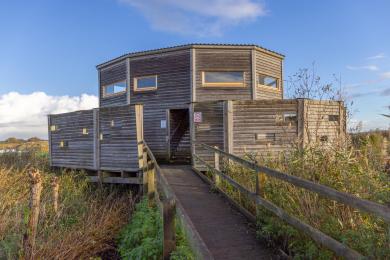
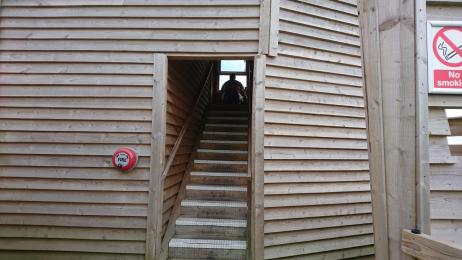
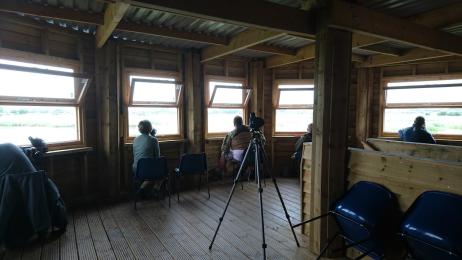
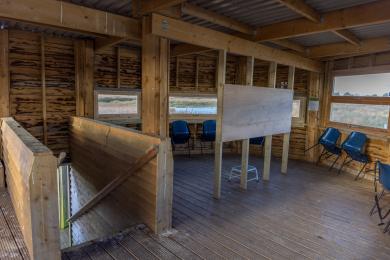
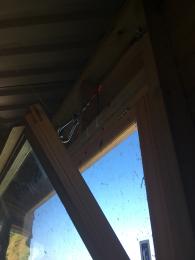
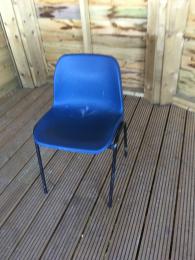
Walton Heath Trail
The Walton Heath trail is a 1900m circular grass track around an area of reedbed with views of Glastonbury Tor. The trail is accessed from the Ham Wall Loop via a kissing gate / five-bar gate next to Viewing Platform 1. Two Blue Badge parking spaces are available here (see previous sections).
Dogs (excepting assistance dogs) are not permitted on any part of the Walton Trail or Tor View hide.
Along the route, you may hear the 'whistle' of wigeon, the lapping of water at the edge of the land, or the whirring of a dragonflies wings. In autumn and winter there may be leaves underfoot and a brisk wind.
The track is an uneven grass path throughout. It can become muddy and waterlogged in winter and after periods of heavy rain. The trail may be closed in extreme conditions.
There are five wooden seats of mm height along the trail. These all have back and arms. One open viewing screen with bench seating (no backs or sides) is located on the trail. This has a viewing window looking out over the water at mm height from ground level.
At the start of the Walton Heath trail, a wheelchair-accessible 200m boardwalk starts at the Blue Badge parking and provides access to three viewing screens of similar wooden construction, but with various views through the wetland. Each viewing screen has bench-type seating with no backs or sides and is 480 mm in height. The screens are constructed from wood and all have a roof, with viewing slits 900 mm from the ground. The flooring in each screen is recycled plastic decking. There is a slight incline on the approach to each screen. Coloured ID boards are displayed at the viewing screens to help with identification.
The boardwalk is made from recycled plastic with a raised non-slip surface and kickboard on either side. The boardwalk is 1200 mm in width throughout.
Beyond the viewing screens, a hard-surfaced track covered with rubber matting leads to the Tor View Hide. The track is 1500mm in width with kickboards on either side. There are two passing places along the track both 2150mm in width. There is one wooden seat with both a back and arms located along the track.
The Tor View Hide is accessed via a sloping wooden boardwalk covered in wire mesh 1500mm in width, There are handrails on either side of the boardwalk.
The Tor View Hide is a covered wooden structure with windows giving a 360-degree view. There are six wooden benches of mm height located on either side of the length of the building. The wooden benches are moveable and have no backs or sides. There are open viewing slits 900mm from the ground on each side of the length of the building. There is space within the building for wheelchairs and mobility scooters.
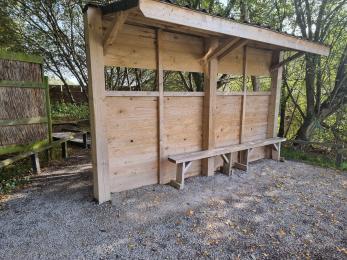
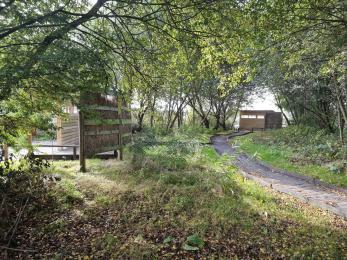
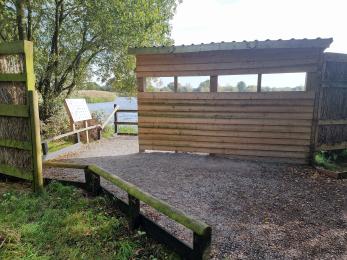
Reedbed trail
The Reedbed Trail is a 500m accessible boardwalk loop through part of Walton Heath. The trail is accessed from the Ham Wall Loop via a kissing gate / five-bar gate next to Viewing Platform 1. On-reserve Blue Badge parking is available at Walton Heath (see previous sections).
Dogs (excepting assistance dogs) are not permitted on the Reedbed trail.
The boardwalk is constructed from recycled plastic and is 1500mm in width throughout, with kickboards on either side. There is one passing place on the boardwalk 2400mm in width. Along the course of the Reedbed Trail, there are a series of plastic lecterns containing seasonal activity trail information. These trails are sold at the Info Point at the main car park.
There is an offshoot of the boardwalk that goes around a wooden otter memorial sculpture. This is narrow around the perimeter, 850mm width at its narrowest. This is a place for quiet reflection.
The Reedbed Trail leads on to a discovery area designed for families and education. The main features of this area are a kid's hide with a slatted wooden construction, split over two levels, and a wooden climbing frame designed to resemble bulrushes. To reach these, there are two walkways of minimum mm width with handrails over a shallow ditch.
The elevated platform of the kid's hide is reached by climbing six steps of mm depth which have a handrail. The upstairs is surrounded by a fence of mm height, with a viewing window of the same height overlooking open water and a reedbed. There is a height restriction for this part of the hide. The downstairs section is designed for accompanying adults and has viewing windows at various heights.
The climbing frame consists of raised wooden balance beams and steel-reinforced rope netting. The highest point on the climbing frame is mm. Underneath the equipment is a bed of bark chippings of minimum 300mm depth to provide cushioning in the event of a fall. Surrounding the climbing frame is a low grass bank, with access paths cut through in two places. There is rubber matting on the uneven grass paths between the various section of this discovery area.
There are three wooden picnic benches secured to the ground, providing seating of mm height for six people on each. There is a separate wooden seat mm in height, with a back and arms located here. There is a wooden pond-dipping platform over open water which is used by schools and for events only. There is a kickboard surrounding the platform but there are no handrails present. There is rescue equipment in place.
As part of the loop, a length of the boardwalk goes over an area of open water. There are handrails on either side at this point. At the end of this part of the boardwalk, there is a low barrier to open water.
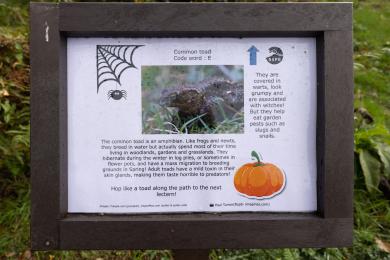
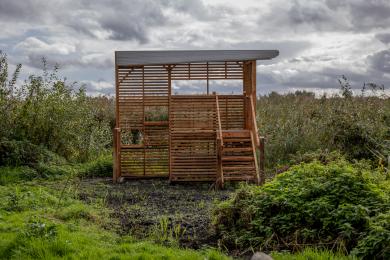
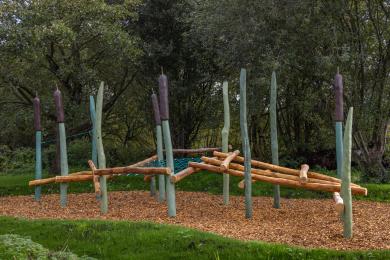
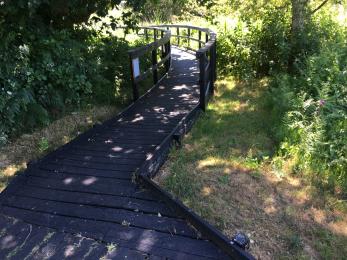
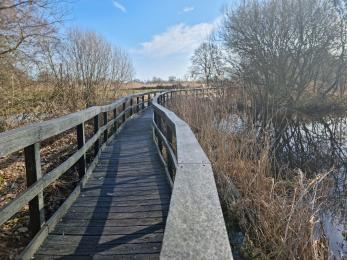
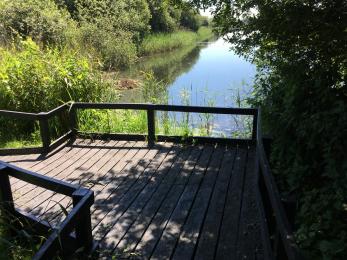
Loxton's Marsh trail
The Loxton's Marsh trail is 1300m in length and is accessed via the Reedbed trail on Walton Heath or through two gates along the Ham Wall Loop.
The trail is rough grass which can be wet at any time of the year. Parts of the trail can be muddy or waterlogged in the winter and after periods of heavy rain. The trail may be closed in the winter depending on the condition of the paths.
The first access point from the Ham Wall Loop is via a bridge over a ditch and through a kissing gate. The bridge is has a wooden surface covered in wire mesh. There are wooden handrails on both sides of the bridge. There is a slight sloping descent to the bridge.
The second access point from the Ham Wall Loop is via a kissing gate and a five-bar wooden gate. There is a slight descending slope to the gates. The five-bar is securely shut with a padlock which can be accessed using a RADAR key.
There is one viewing screen located on the Loxton's trail this has a back and roof and bench-type seating of mm height. The seating has no backs or arms. There is no further seating on the Loxtons trail.
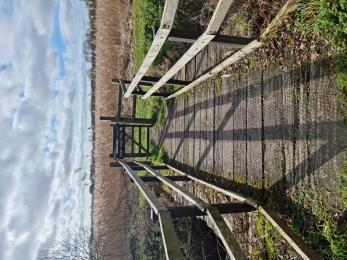
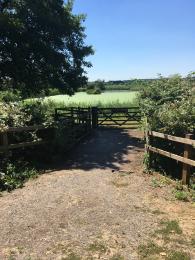
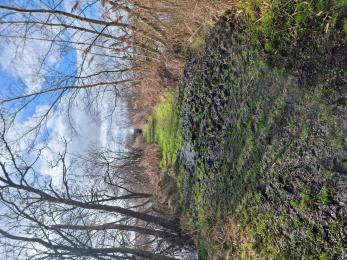
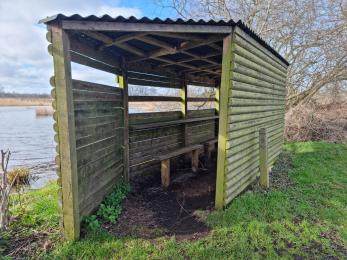
Customer care support
Emergency evacuation procedures

 Download this guide as docx
Download this guide as docx